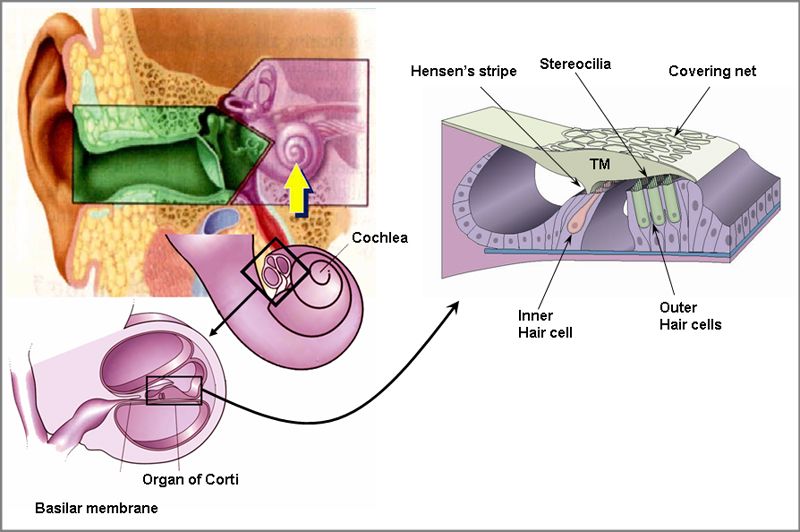
Itay Rousso's Lab
The role of the mammalian tectorial membrane in hearing mechanics
The mammalian hearing’s extremes of performance reflect striking optimizations of the nervous system’s signal processing capacity. At the threshold of hearing, the mammalian cochlea can respond to acoustic stimuli that generate vibrations with amplitudes of a few Ångstroms. At the same time, the cochlea can withstand sound pressures that are one million times greater than sounds at the threshold of detection. Furthermore, humans can detect stimuli at frequencies between 20Hz and 20 KHz with exquisite selectivity. For example, one can distinguish between tones at 1,000 Hz and 1001Hz– a frequency difference of only 0.1%. The cochlea is the mammalian organ that enables such an exquisite sensitivity and frequency selectivity.

Our knowledge of the cellular processes that underlie hearing in the cochlea has greatly increased in the past two decades. In contrast there are many gaps in our understanding of extra-cellular processes that take place in the cochlea. In particular, the micromechanical processes by which basilar membrane motion is coupled to hairbundle deflection motion and the mechanism by which the electro-mechanical transduction of the outer-hair cells is communicated to the inner-hair cells (which is required to excite the nerve fibers) are both unknown.
The tectorial membrane (TM) is an extracellular matrix situated over the sensory cells of the cochlea. Its strategic location, together with the results obtained from recent mutational analyses, suggests that it has an important role in the conversion of mechanical energy arriving at the cochlea to neural excitation. Our studies aim to understand the role of the TM in hearing mechanics.
Our major achievements in the study of the tectorial membrane (TM) include: (i) the finding that a large variation exists in the elastic modulus along the longitudinal direction of the TM within the zone that is located above the auditory sensory cells; (ii) determination of the native 3D collagen architecture in the TM; (iii) elucidation of the structural basis for the observed variations in mechanical properties; (iv) determination of the anisotropic material properties of the TM using a newly established framework that combines simulations and experiments; and (v) the finding that the anisotropic properties of the TM play a role in stereocilia deflection mechanism.